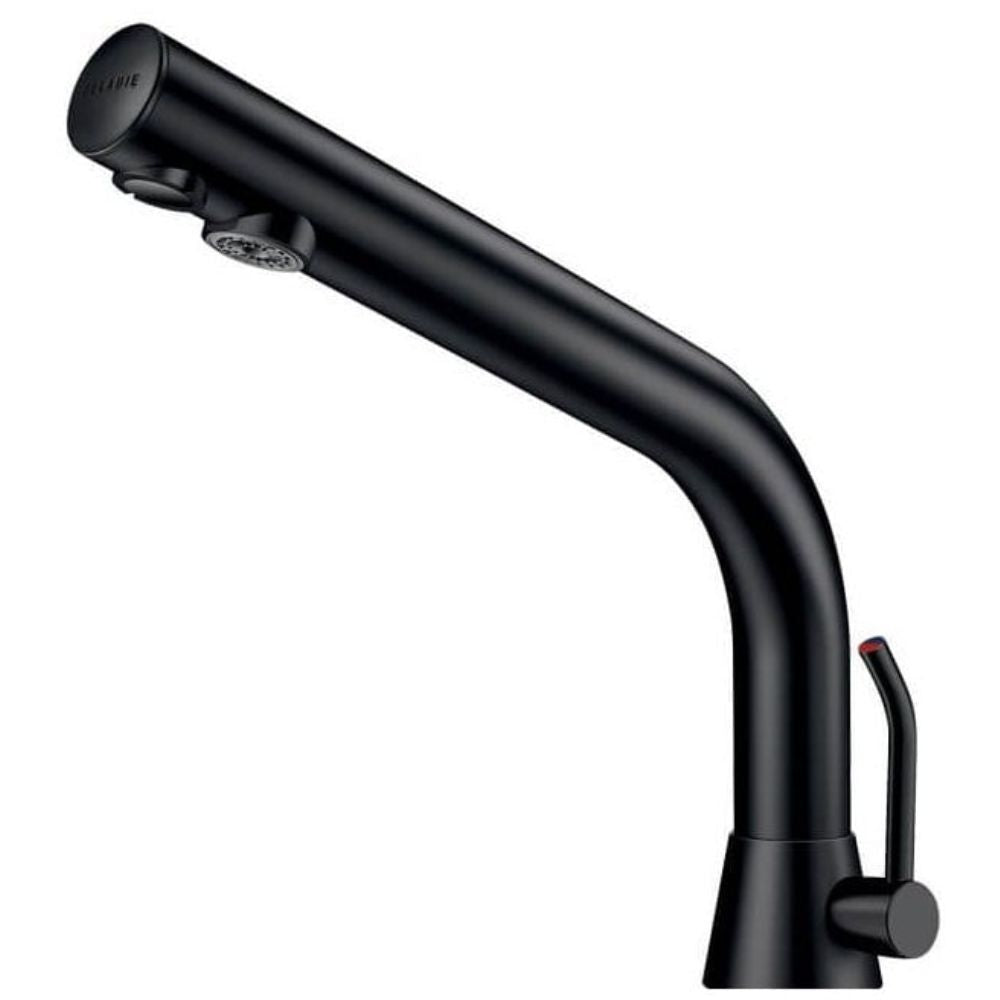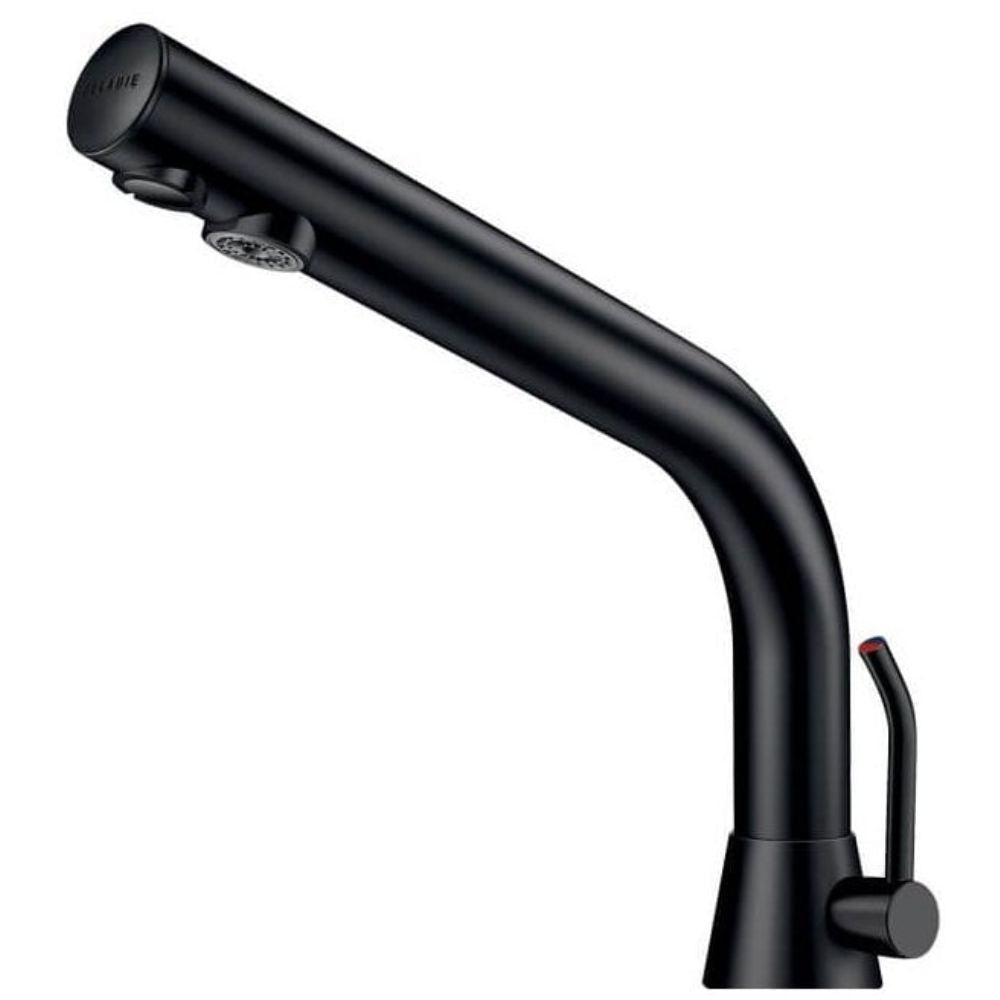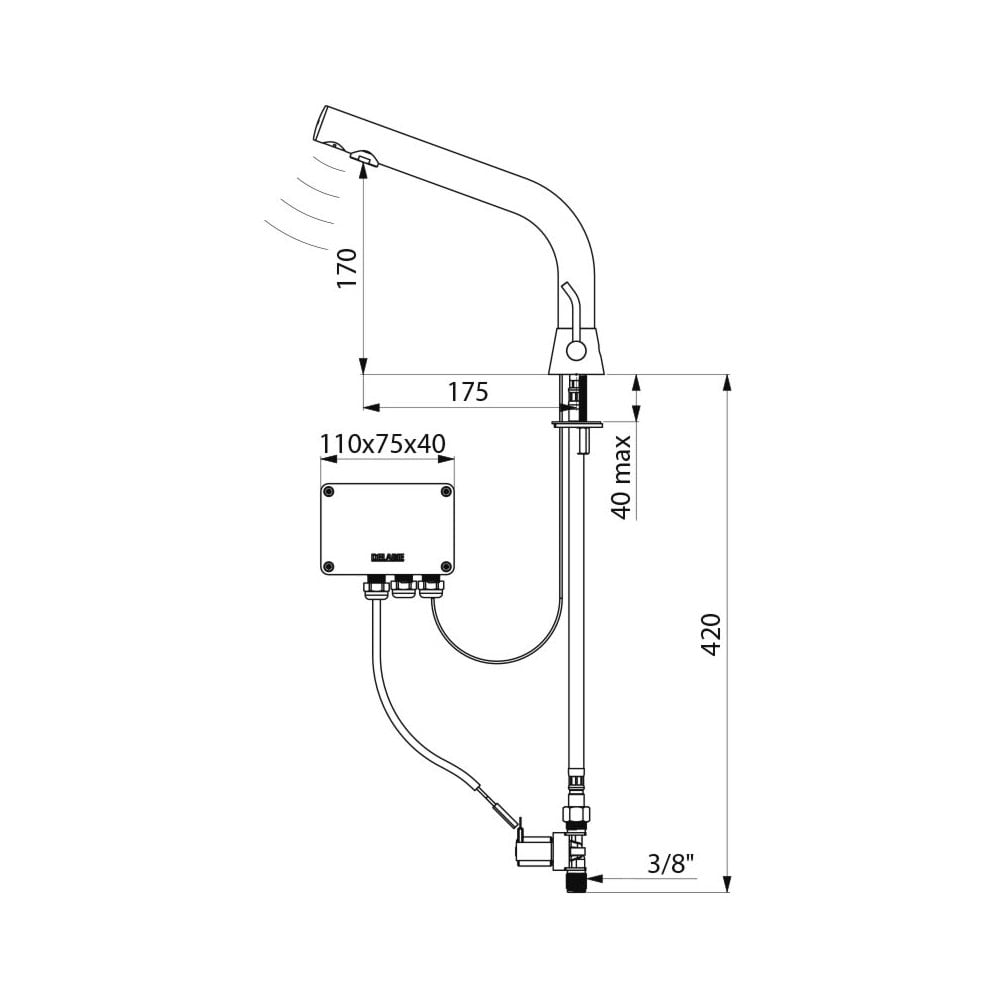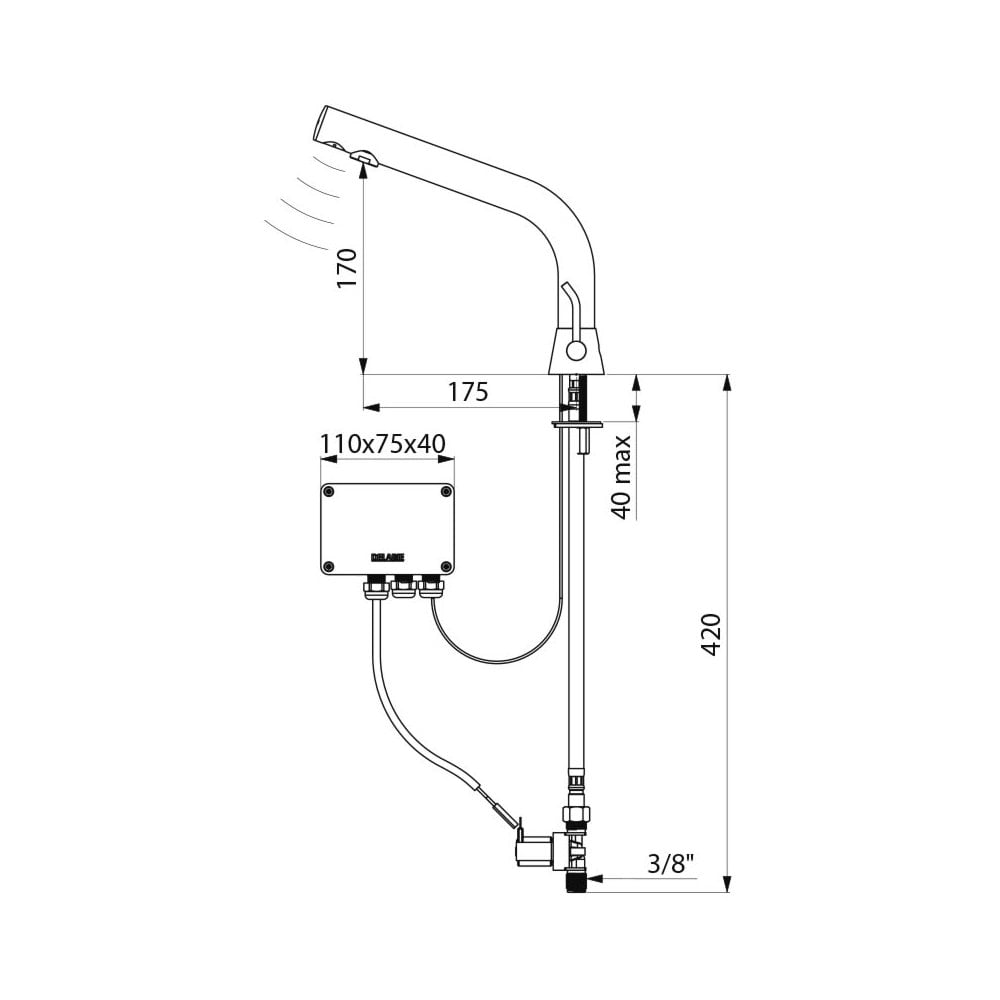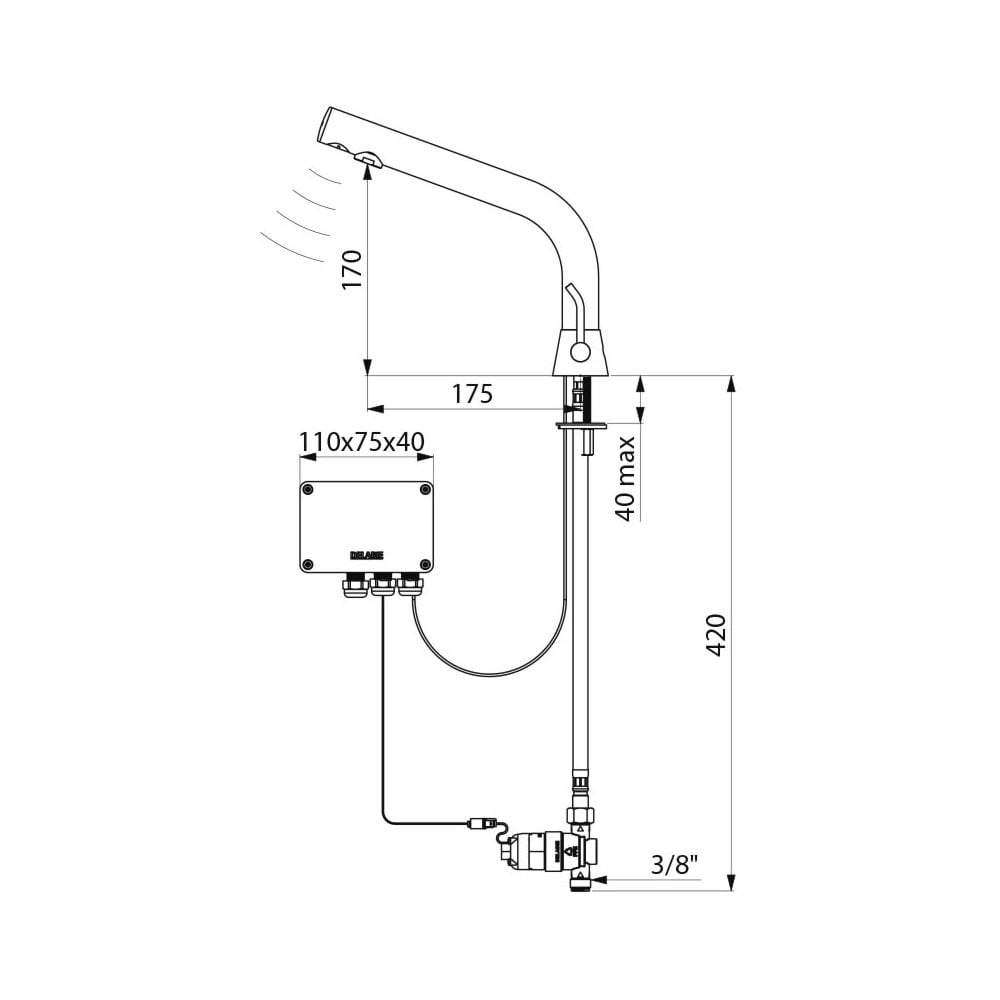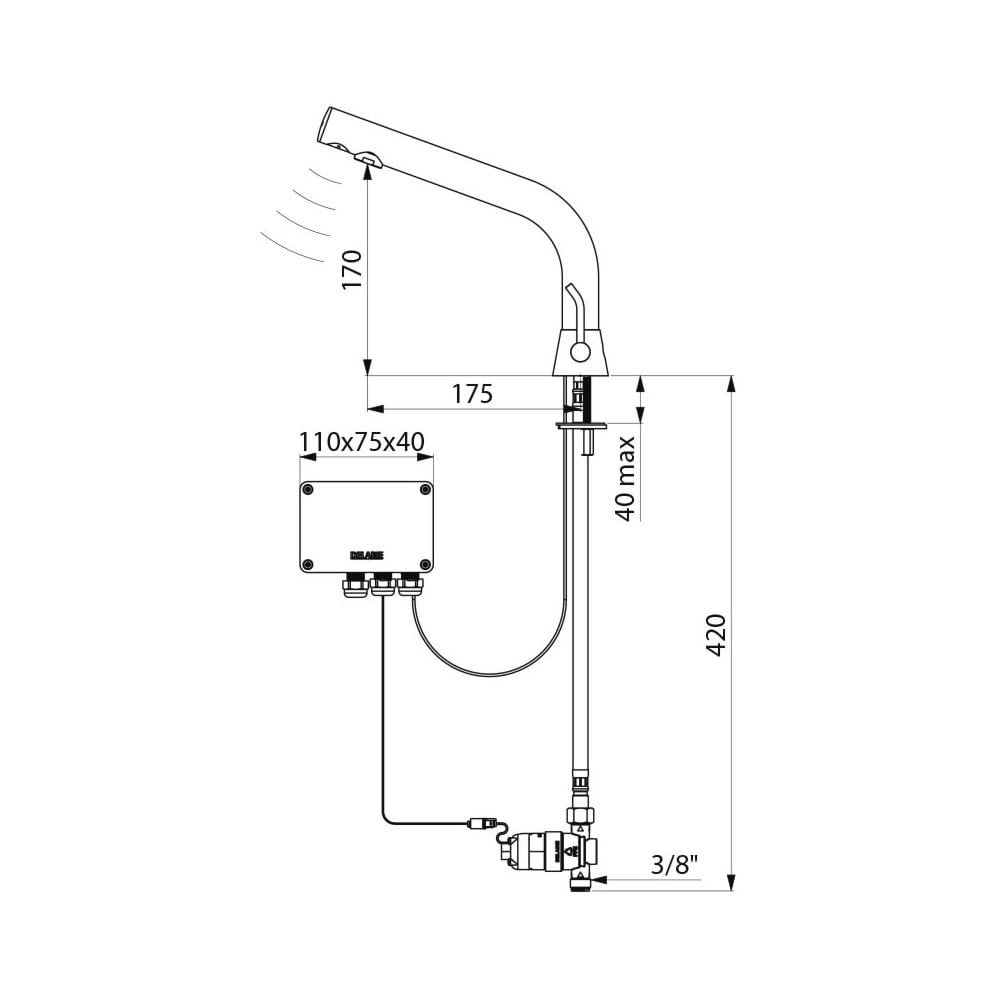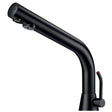388MCHB / 488MCHB DELABIE Black BINOPTIC Electronic Tap/Mixer for Semi-Recessed Basins (170mm High)
Lead time for this item is approx. 2 - 5 Working Days
388MCHB / 488MCHB DELABIE Black BINOPTIC Electronic Tap/Mixer for Semi-Recessed Basins (170mm High) - MAINS Supplied / Black is backordered and will ship as soon as it is back in stock.
Couldn't load pickup availability
- Operation (model dependant): 230/12V Mains Supply with Transformer / 123 6V Lithium Battery Supply
- Flow Rate at 3 Bar: 3lpm (Can Be Adjusted From 1.4 to 6lpm)
- Guarantee: 10 Years
- Type of Water Mixing: Adjusted by User at Tap
- Connector: 3/8"
- Mounting: Deck Mounted
- Total Hygiene: No Manual Contact
- 90% Water Savings
- Anti Bacterial Proliferation Duty Flush
- Material: 304 Stainless Steel
- Chrome Plated Brass Body
- Available in a Matte Black Chrome Finish
Description
Description
This recessed electronic basin tap from DELABIE comes available in a matte black chrome finish. 388MCHB comes with an independent IP65 electronic control unit and operates using a 230/12V mains supply with transformer. 478MCHB operates using a 123 6V lithium battery supply. The flow rate is pre-set at 3 lpm at 3 bar, however, can be adjusted from 1.4 to 6 lpm. Scale-resistant flow straightener. Adjustable duty flush (pre-set flush ~60 seconds every 24 hours after last use). Active, infrared presence detection, sensor at the end of the spout optimises detection and will allow for a touch free experience. Filter and solenoid valve M3/8". This unit comes with a chrome plated brass body. Recessed installation. Anti-blocking safety. Spout with smooth interior and low volume of water (limits bacterial niches). Suitable for people with reduced mobility. 10-year warranty. For more info, please refer to the spec sheet available in downloads.
Drop Height: 170mm
Spout Length: 175mm

